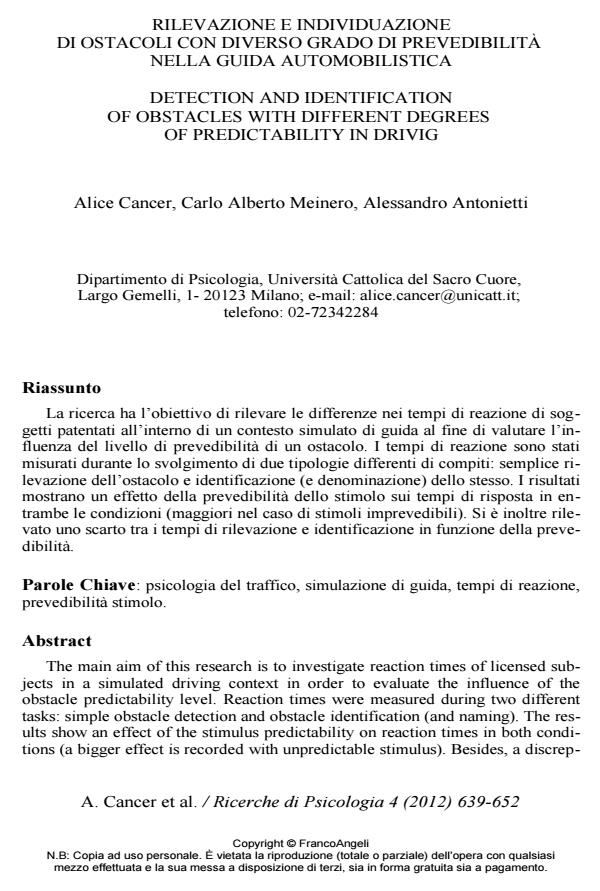Detection and identification of obstacles with different degrees of predictability in drivig
Journal title RICERCHE DI PSICOLOGIA
Author/s Alice Cancer, Carlo Alberto Meinero, Alessandro Antonietti
Publishing Year 2013 Issue 2012/4
Language Italian Pages 14 P. 639-652 File size 270 KB
DOI 10.3280/RIP2012-004004
DOI is like a bar code for intellectual property: to have more infomation
click here
Below, you can see the article first page
If you want to buy this article in PDF format, you can do it, following the instructions to buy download credits

FrancoAngeli is member of Publishers International Linking Association, Inc (PILA), a not-for-profit association which run the CrossRef service enabling links to and from online scholarly content.
The main aim of this research is to investigate reaction times of licensed subjects in a simulated driving context in order to evaluate the influence of the obstacle predictability level. Reaction times were measured during two different tasks: simple obstacle detection and obstacle identification (and naming). The results show an effect of the stimulus predictability on reaction times in both conditions (a bigger effect is recorded with unpredictable stimulus). Besides, a discrep ancy between detection and identification times depending on the stimulus predictability was observed.
Keywords: Traffic psychology, driving simulation, reaction times, stimulus predictability
Alice Cancer, Carlo Alberto Meinero, Alessandro Antonietti, Rilevazione e individuazione di ostacoli con diverso grado di prevedibilità nella guida automobilistica in "RICERCHE DI PSICOLOGIA " 4/2012, pp 639-652, DOI: 10.3280/RIP2012-004004